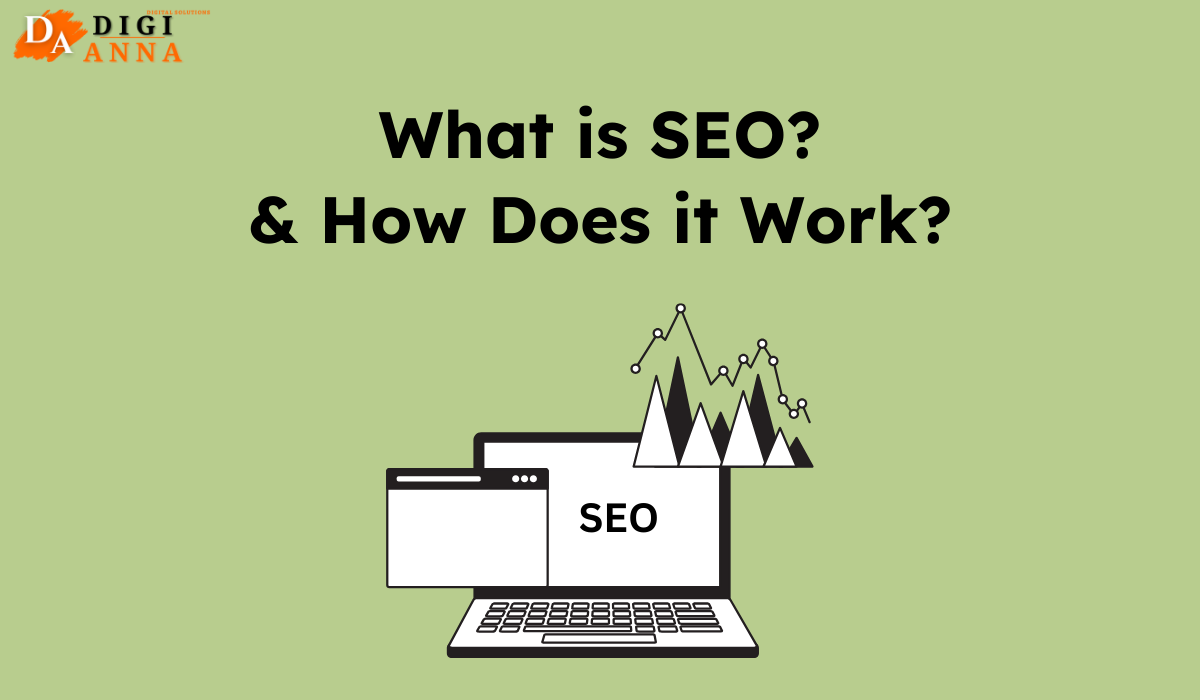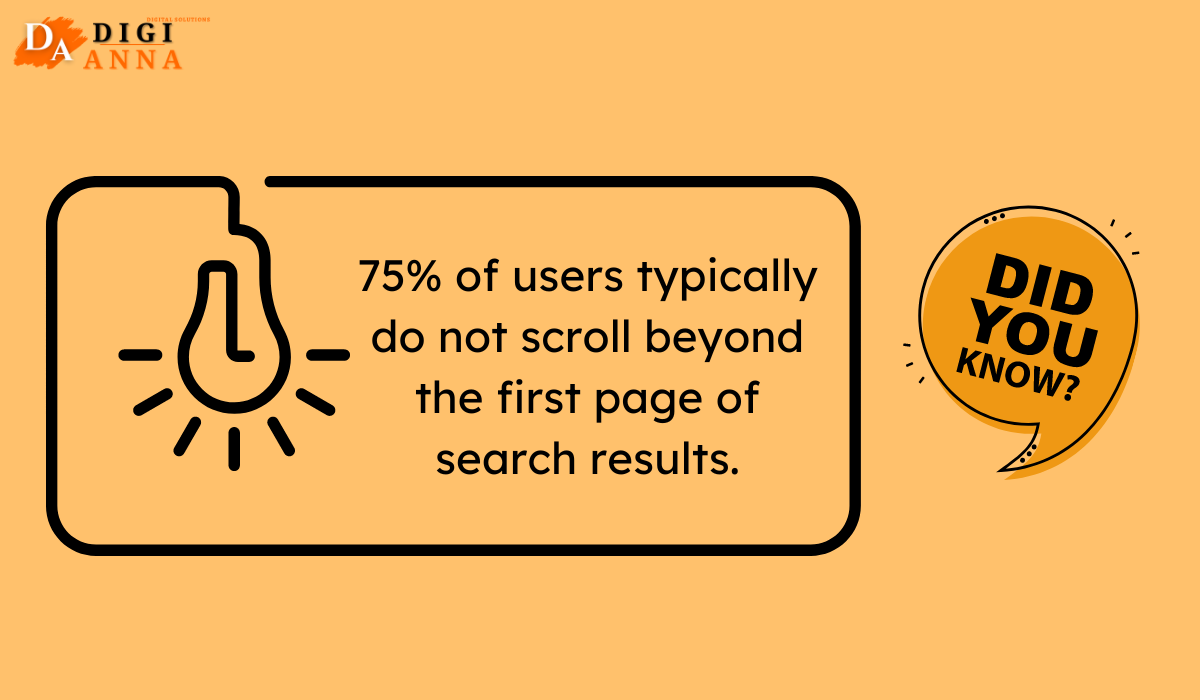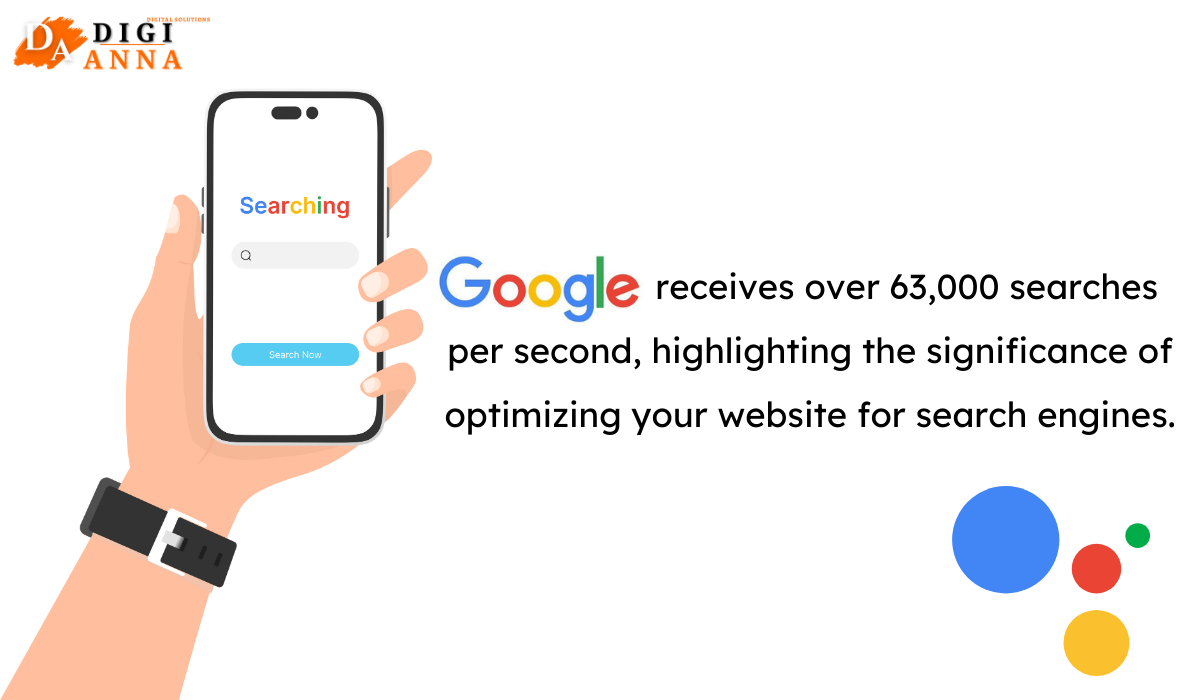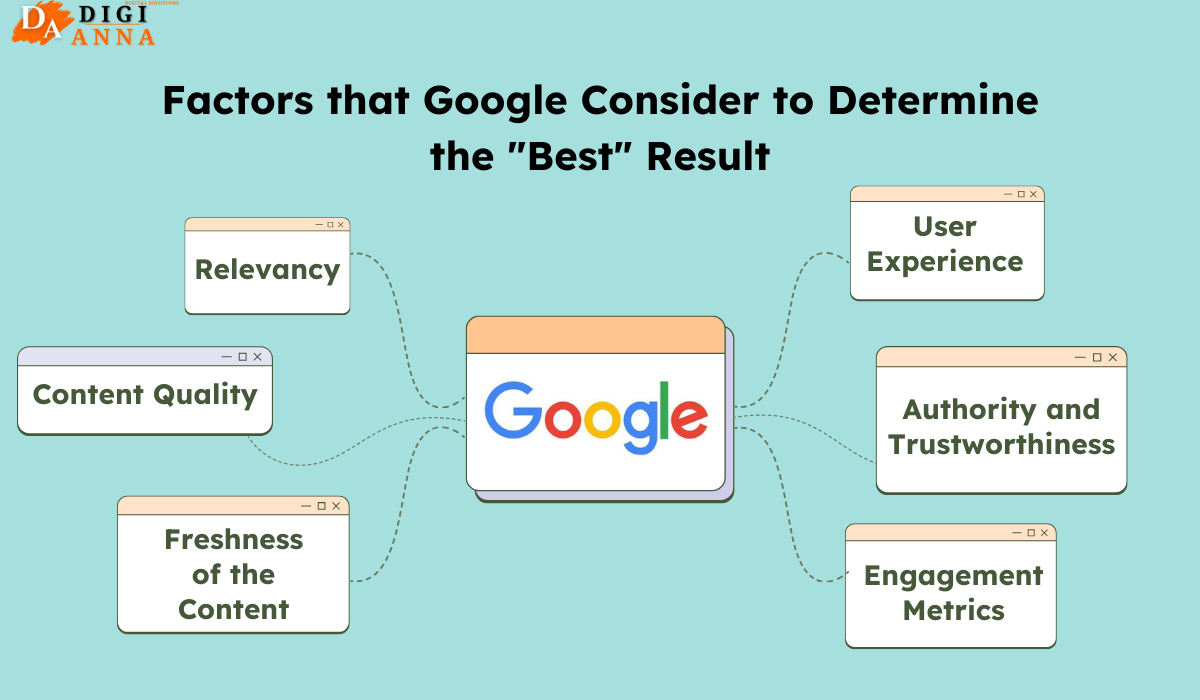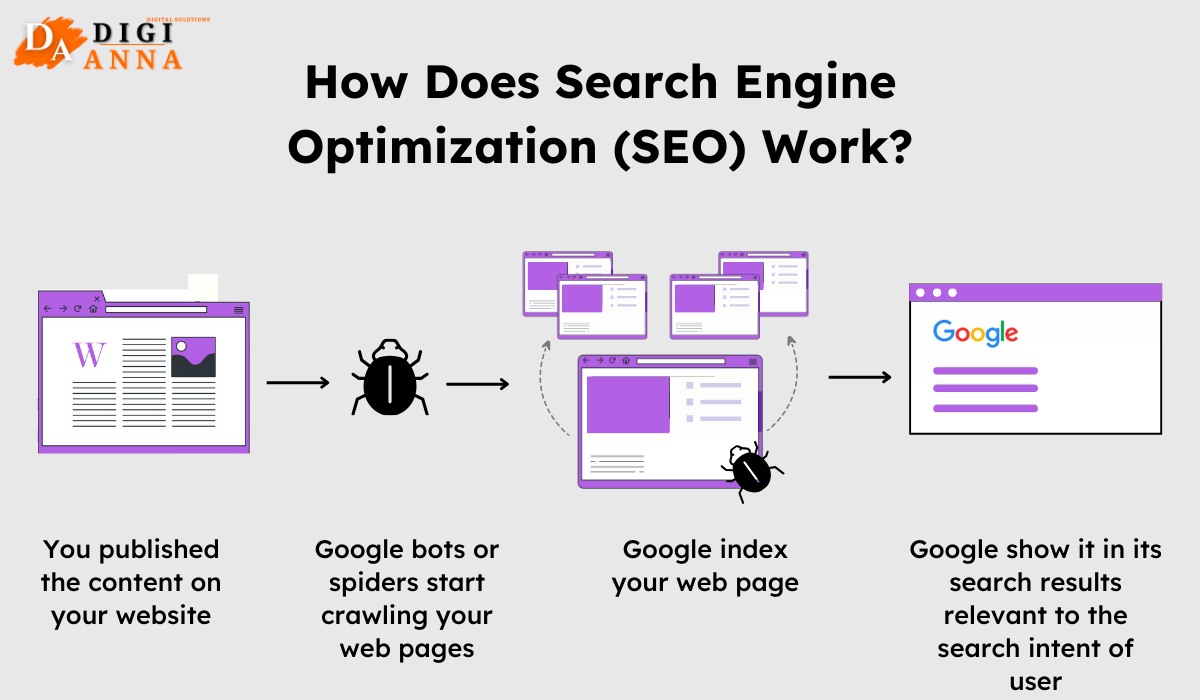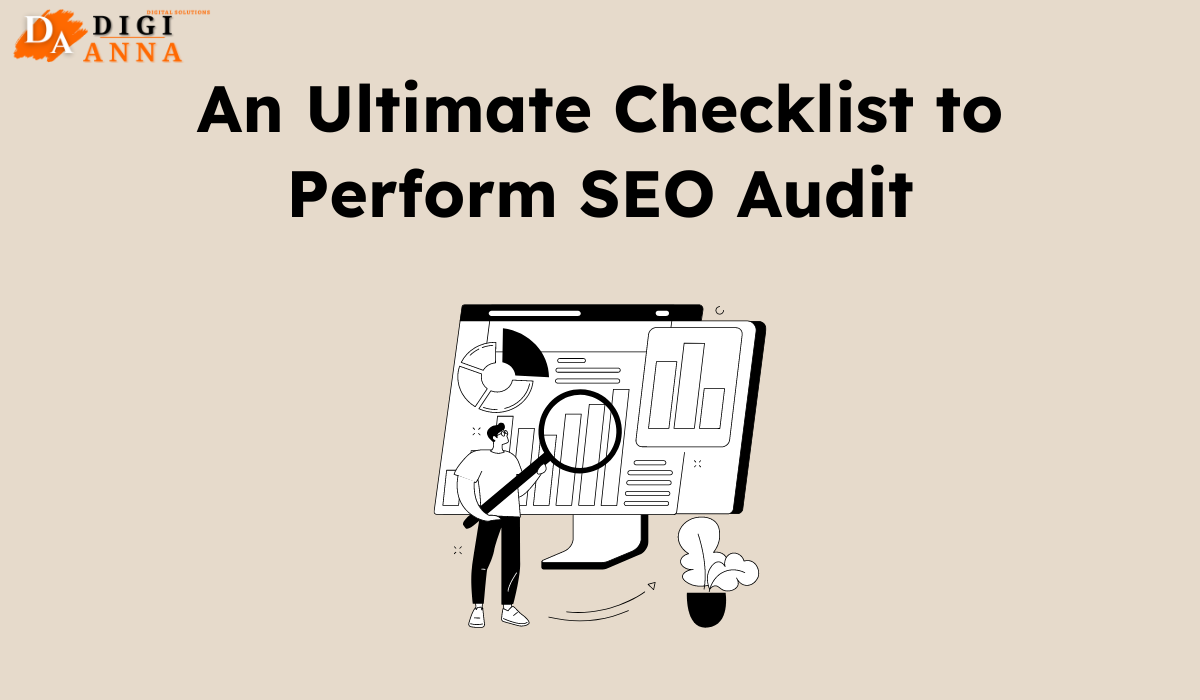Search engine optimization (SEO) might seem easy when you first look at it. You pick a few keywords, and your page is good to go for SEO, right? Well, not quite. While some of you grasp the basics of SEO, a lot has evolved over the past decade. The SEO we’re familiar with today is different from what it was ten years ago. Hence, it remains an evolving concept that marketers must constantly redefine.
Search Engine Optimization (SEO): What is it?
SEO, or search engine optimization, is the key to enhancing your website’s visibility on popular search engines like Google, Microsoft, Bing, and Yahoo. It means making your online presence better so that people can easily find you when they search for products you sell, services you provide, or information about your expertise.
In the world of online presence, SEO is about attracting organic traffic by providing valuable content that matches user intent. Let’s take a look at what website SEO optimization looks like.
Increasing Visibility:
SEO aims to enhance the visibility of your web pages in search results. As users type in queries aligned with your offerings or knowledge areas, a well-optimized site is more likely to appear prominently. It increases visibility and encourages users to click through to your website.
Optimizing Content:
To achieve this, optimize your content with relevant keywords and phrases that reflect what your target audience is searching for. This optimization signals to search engines that your site is a credible source of information on the topics users are interested in.
Driving Organic Traffic:
SEO aims to attract organic traffic – visitors who find your website through unpaid search results. You position your site as a relevant and valuable resource by aligning your content with user queries. This, in turn, enhances the likelihood of attracting potential customers, clients, or a recurring audience.
Converting Visitors (Conversions):
SEO is about more than just getting more people to see your website. It’s also about turning those visitors into loyal customers or followers. A well-optimized website should draw in users and effortlessly lead them to action, such as purchasing, signing up, or interacting with your content.
Engaging Users:
Moreover, crafting high-quality, informative content encourages users to spend more time on your site, reducing bounce rates. When visitors engage with your website, it lets search engines know that it is helpful and meets users’ requirements, which could lead to better rankings in the long run.
Key Tasks in SEO
Search engine optimization (SEO) involves several fundamental activities to improve a website’s ranking on search engine results pages (SERPs). These tasks include:
1. Keyword Research – Choose the Right Keywords:
Selecting the right keywords forms the foundation of effective SEO strategies. This is the reason for the identification of the target keywords. When users search for content on your website, it’s crucial to identify the words and phrases they use in search engines. It ensures that your content aligns with the queries of your target audience.
2. Effective On-Page Optimization:
After identifying your targeted keywords, strategically integrate them into your website’s content, titles, meta descriptions, and headers to align with your audience’s search intent. It ensures search engines can easily understand the relevance of your pages. This approach enhances user experience, as visitors can quickly find the information they are searching. Therefore, it improves its chances of ranking higher on SERPs.
3. Creating High-Quality Content and its Optimization:
High-quality content is king in the world of SEO. Keep your website up-to-date by regularly publishing fresh articles, blog posts, or multimedia content that offers value to your audience. Informative, engaging, and relevant content attracts visitors and encourages other websites to create backlinks, enhancing your website’s authority and relevance. As a result, your website gains credibility and attracts more organic traffic.
4. Building a Strong Backlink Profile:
Creating a network of quality backlinks from reputable websites holds great importance. These links are like votes that tell search engines, “Hey, this content is good! Moreover, it indicates that your site is trustworthy and deserves higher rankings.
5. Technical SEO Implementation:
Technical SEO involves optimizing your website’s backend, making it easier for search engine bots to crawl and index your web pages. It includes addressing the following issues:
- Improving Site Speed
- Enhancing Mobile Responsiveness
- Optimizing Site Structure
- Utilizing XML Sitemaps
- Fixing Broken Links
- Implementing Schema Markup
- Removing Duplicate Content
6. Optimizing User Experience (UX) for Better SEO Results:
Ensure your website is user-friendly. It will help retain your website visitors and boost search engine rankings.
- Ensuring User-Friendly Navigation: To improve user experience, streamline your website’s navigation. Add clear menus and intuitive links to help visitors effortlessly find what they’re looking for.
- Implementing Clear Calls-to-Action: Encourage user interaction by implementing clear and compelling calls to action throughout your website. Whether prompting visitors to subscribe to your newsletter or guiding them to purchase, a well-placed call-to-action can drive engagement and conversions.
- Adding Engaging Multimedia Content: Captivate your audience with multimedia content such as videos, images, and infographics. These visual elements break up the text and enhance user engagement. Consequently, they make your website more memorable and exciting to explore.
7. Monitoring and Analytics for Better Performance:
SEO requires ongoing attention and analysis. Regularly track your website’s performance using SEO tools like Google Analytics and Google Search Console. These tools provide valuable insights into your website’s traffic and user engagement. Also, Keep a close eye on key metrics like traffic, user behaviour, and conversion rates. It provides vital information about how users interact with your site. Furthermore, regular analysis helps pinpoint areas where your website can improve.
8. Integrate SEO with Social Media:
Integrating SEO with social media enhances online visibility. Incorporate relevant keywords into your social media posts and profiles. You can improve your website’s ranking and engage a wider audience by combining these strategies. Additionally, using social platforms raises brand awareness and drives organic traffic to your website.
Types of Search Engine Optimization (SEO)
There’s more than one approach when optimizing your website for search engines. Understanding the various types of SEO can help you tailor your strategies for maximum effectiveness.
1. On-Page SEO:
On-page SEO aims to enhance the ranking of individual web pages on search engines. It’s about optimizing the content, meta tags, header tags, URLs, and images. The goal is to align these elements with relevant keywords and to match users’ search intent, thereby improving the overall user experience.
2. Off-Page SEO:
Off-page SEO means doing things away from your website to make it rank better on search engines. Building backlinks from reputable websites, social media engagement, influencer outreach, and online reputation management are all integral to improving your site’s relevance and authority.
3. Technical SEO:
Making your website technically better is what technical SEO is all about. It ensures search engines can crawl, index, and understand your content effectively. A technically sound website enhances user experience and search engine performance.
4. Local SEO:
Trying to attract local customers? Make sure you’ve got local SEO in place. This type of SEO helps companies to appear in local map results. Getting your business noticed locally includes:
- Making a Google My Business (GMB) page
- Getting listed in local directories
- Encouraging happy customers to leave a reviews
5. Mobile SEO:
As more users access the internet via mobile devices, optimizing your website for mobile search is essential. Google, the leading search engine, places significant importance on mobile-friendly websites in its rankings.
Components of Mobile SEO:
- The website must be mobile-friendly
- Fast Load Times
- Responsive Design
- Seamless User Experience across all devices
6. Voice Search SEO:
Voice-activated devices are increasingly popular, thus making voice search SEO more important than ever. Consequently, optimizing content for conversational queries and prioritizing long-tail keywords enhances visibility in voice search results. Success in this SEO aspect lies in understanding how people verbally search.
Why is Search Engine Optimization (SEO) Important?
Search Engine Optimization (SEO) ensures your website appears prominently in search engine results when people look for information about your products, services, or industry. This visibility is crucial for reaching your target audience and standing out from competitors.
Every day, billions of people use Google to find information and products. This makes search engines one of the biggest sources of website visitors. Appearing in the top search results for your target keywords is essential to capitalize on this traffic source’s potential.
To maximize your website’s visibility, aim for high rankings in search results. The higher your rank, the more visitors your page will attract. For instance, the No. 1 organic result is 10 times more likely to receive a click than a page in position No. 10. Additionally, the top three organic results garner over 50% of all clicks.
This is where SEO comes into play. Search engine optimization is vital for improving your ranking positions, leading to increased traffic. You’ll attract more visitors with better rankings, resulting in new customers and heightened brand awareness. Neglecting SEO means disregarding a critical traffic channel, effectively ceding that space to your competitors. It’s imperative to prioritize SEO to ensure your website’s visibility and competitiveness online.
How is SEO Different From SEM and PPC?
Online marketing frequently uses terms like SEO, SEM, and PPC. But what do they mean, and what sets them apart?
SEO vs. SEM vs. PPC
Search engine optimization (SEO) enhances organic search visibility through keyword optimization and content creation. The goal? To Make sure people can easily find your website at the top of the search engine.
Search engine Marketing (SEM) encompasses a variety of strategies to promote your website through search engines. It includes both organic methods like SEO and paid advertising avenues.
Pay-per-click (PPC) advertising involves advertisers bidding on keywords relevant to their target audience for ad placement in search engine results or on websites that advertise pay-per-click (PPC) advertising.
Differentiating SEO, SEM, and PPC:
- SEO emphasizes organic growth.
- SEM combines organic and paid strategies.
- PPC is a specific paid advertising model.
How Do Search Engines Work?
Are you curious how search engines like Google, Bing, and Yahoo find what you’re searching for on the vast internet? Let’s understand the workings of these search engines that came across through billions of web pages to deliver users with relevant results.
1. Crawling:
It is the initial step in the work of search engines. Search engine bots, also known as crawlers or spiders, explore the web systematically. These crawlers visit websites and follow links to explore new pages. The process is known as crawling.
2. Indexing Content:
After crawling a page, the search engine organizes and stores the collected data in a vast database known as an index. The process is known as indexing. Imagine this index like a giant library catalogue, sorting information by keywords, relevance, and other factors.
3. Ranking Results:
When users enter a search query, the search engine immediately begins its process. It assesses the indexed pages to locate the most relevant matches.
- The Role of Algorithms: Algorithms play a crucial role in this process. It considers factors like content quality, keywords, and user experience.
- Ranking Pages: The search engine then ranks the pages based on their perceived relevance to the user query. The ranking determines their position in the search results, impacting visibility to users.
4. User Query Processing:
The final step is to retrieve the ranked pages and display them on the search engine results page (SERP). This way, users can see the links the search engine believes are “best” to address their query. As a result, users can quickly find what they’re looking for, which improves their search process.
5. User Experience and Relevance:
Search engines aim to present users with the most appropriate and useful results. When deciding the rankings, it considers page load speed, mobile-friendliness, and overall user experience.
6. Continual Updates:
Search engine algorithms constantly change. It is regularly updated and refined to ensure accuracy. This ongoing process guarantees users the best possible experience when searching for something online.
How Does Google Determine the “Best” Result?
Do you ever wonder how Google selects the top spot in its search results? Google uses a complex algorithm that considers various factors to determine a search query’s “best” result. Factors to take into account are:
1. Relevancy
The first criteria Google looks at is relevance. It evaluates how well a webpage’s content matches the user’s search intent. The closer your content aligns with what users are searching for, the higher your website’s chances of getting a ranking.
2. Content Quality:
Google prefers high-quality content when evaluating the “best” result. To make your website stand out, deliver valuable and reliable content that fulfils your audience’s needs. Additionally, ensure your content is well-researched, clearly written, and search engine friendly. Focusing on these aspects can attract more organic traffic.
3. Freshness of the Content:
Google gives priority to fresh and up-to-date content for specific search queries. Update your website regularly with relevant information and trending topics. As a result, it indicates that your content stays valuable to users over time.
4. User Experience:
Beyond content, Google considers the overall user experience. Website speed, mobile-friendliness, and easy navigation create a positive user experience. Optimizing these aspects enhances your chances of referring as the “best” result by Google’s algorithms.
5. Authority and Trustworthiness:
Google assesses web page credibility based on the quantity and quality of backlinks. Backlinks from credible sources assure Google that your content is trustworthy and authoritative. Consequently, it helps improve your search result ranking.
6. Engagement Metrics:
Google also looks at the user engagement metrics when determining the “best” result. Metrics such as click-through rate (CTR), session time, and bounce rate provide insights into how users interact with a website.
How Does Search Engine Optimization (SEO) Work?
SEO is the key to increasing the visibility of your website. Understanding its intricacies and implementing strategic SEO optimization tools can enhance your online presence, attract organic traffic, and ultimately achieve your digital marketing objectives. Let’s learn how Search Engine Optimization (SEO) works and the steps involved in the process.
The process of SEO encompasses a wide range of tasks. These tasks are designed to align your website’s content, structure, and performance with search engine algorithms. Each step in the process maximizes your website’s visibility and relevance to search engine queries.
Let’s simplify the process.
1. Finding Keywords with Relevancy and High Search Volumes
The first step in the SEO process is conducting keyword research. Tools such as Google Keyword Planner, SEMrush, and Moz Keyword Explorer can help identify relevant keywords with high search volumes.
2. Identify Competitors in Your Niche or Industry
Competitor analysis is a valuable tool for refining and enhancing your SEO strategy. Find out who your biggest competitors are in your niche or industry. Utilize tools like SEMrush, Ahrefs, or Moz to compile a list of competitors ranking for keywords similar to your website.
- Analyze Competitor Websites
- Identify Opportunities
- Areas for Improvement
- Implement Changes
- Monitor and Adapt
Examine their keywords, backlink profiles, and top-performing content.
3. Creating a Search-Friendly Website with On-Page Optimization
Optimize individual pages for search engines by incorporating target keywords in meta titles, meta descriptions, header tags and content. Tools like Yoast SEO for WordPress Moz can guide you in optimizing on-page elements effectively.
4. Enhancing Site Structure with Technical SEO Audit
Technical SEO ensures a website is optimized so search engine crawlers can effectively crawl and index your site. Tools like Google Search Console and Screaming Frog SEO Spider help identify and resolve broken links, crawl errors, site speed problems, and duplicate content.
5. Quality Content is King – Content Creation and Optimization
High-quality content is crucial for SEO success. Tools like Grammarly ensure error-free content, and readability tools like Readable and Hemingway Editor enhance comprehension. BuzzSumo and Ahrefs Content Explorer assist in identifying trending topics and analyzing competitor content.
6. Building Authority Through Backlinks
Build credible backlinks to your site through outreach or collaboration. Acquire backlinks from reputable sites using Moz Link Explorer and Ahrefs Backlink Checker tools. Identify potential link opportunities and track your backlink profile for sustained growth.
7. Engage Users with a Smooth Mobile Experience
Given the surge in mobile searches, prioritize mobile optimization. Google favours mobile-friendly sites, so run your site through Google’s Mobile-Friendly Test and tools like PageSpeed Insights to ensure a seamless mobile experience.
8. Performance Monitoring for Informed Decisions
Stay on top of your website’s performance with tools like Google Analytics, Moz, or Ahrefs. Track SEO performance metrics, such as keyword rankings, organic traffic, and conversion rates, scrutinize traffic sources and evaluate user behaviour. Use these insights to make informed adjustments for sustained success.
9. Continuous Learning and Adaptation
Make sure you’re aware of the latest SEO trends and algorithm changes, so you can adjust your strategy as necessary. SEO operates as a complex feedback system and aims to produce the most accurate, trustworthy, and relevant results for any search query. It gathers input from you, Google, and searchers. Your responsibility lies in creating content that meets Google’s experience, expertise, authority, and trust (E-E-A-T) criteria. These factors, in turn, fulfil the requirements of searchers.
Facts About Search Engine Optimization (SEO)
SEO holds immense potential for enhancing a website’s visibility on search engines. It leads to an increase in organic traffic, which means more visitors are now finding your website organically. Here are some SEO facts illuminating its relevance in today’s digital era.
The dominance of Search Engine Giants
Search engines like Google, Bing, and Yahoo are supreme. Websites are optimized to meet the criteria set by these platforms’ algorithms, ensuring maximum visibility to potential visitors.
Algorithm Updates are Constant
Search engines frequently update search algorithms to provide users with the most relevant results. Keeping pace with these changes is essential for maintaining a solid SEO strategy that keeps your website at the forefront of search results.
Mobile Optimization is Non-Negotiable
With the increasing number of mobile users, search engines prefer mobile-friendly websites. Optimizing your website for mobile devices is not just a choice but a necessity for SEO to stay competitive in SEO rankings.
Relevant Keywords Matter a Lot
Keyword stuffing is obsolete. Strategically integrating relevant keywords in your content remains essential for SEO. Focus on the natural flow of keywords in the content that engages the readers. Furthermore, it enhances the user experience.
Quality Over Quantity in the Content
Quality is always more valuable than quantity when it comes to content in SEO. Helpful, informative, and engaging content drives organic traffic and improves rankings.
User Experience is Priority
Search engines prefer websites that provide an excellent experience for users. Page loading speed, mobile responsiveness, and intuitive navigation significantly impact a website’s SEO performance.
Local SEO Drives Foot Traffic
Local businesses benefit from optimizing for local search and improving visibility in the community. Therefore, local SEO practices can significantly enhance your visibility in local search results.
Backlinks are Important
Backlinks are a significant ranking factor in SEO. High-quality backlinks from reputable sources signal to search engines that your website is credible and authoritative in its niche or industry. Also, it helps in increasing the domain authority of your website. But make sure that you always check the spam score of the website on which you plan to build links.
Analytics Guide Optimization Efforts
Analytics tools provide valuable insights for optimizing a website. Monitoring essential SEO metrics can help you identify areas for improvement.
SEO is Not a One-Time Task
SEO is a continuous process due to frequent algorithm updates. Regular website optimization is necessary to maintain and improve your rankings.
SEO Takes Time, Patience is Key
Achieving and maintaining high search rankings requires time and patience. Consistent efforts and strategic planning are essential for long-term SEO success. Hence, it is worth the investment.
In essence
SEO helps make your website more visible on the internet. As you optimize your website to align with user intent, you increase visibility and pave the way for converting visitors into customers. It fosters a community that keeps coming back for more. Embrace SEO to utilize the full potential of your digital space.

